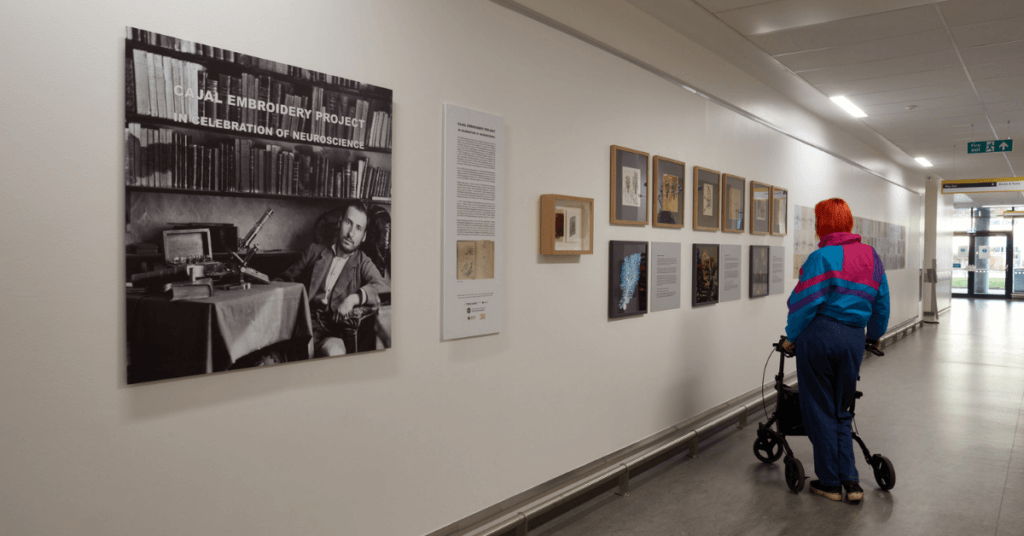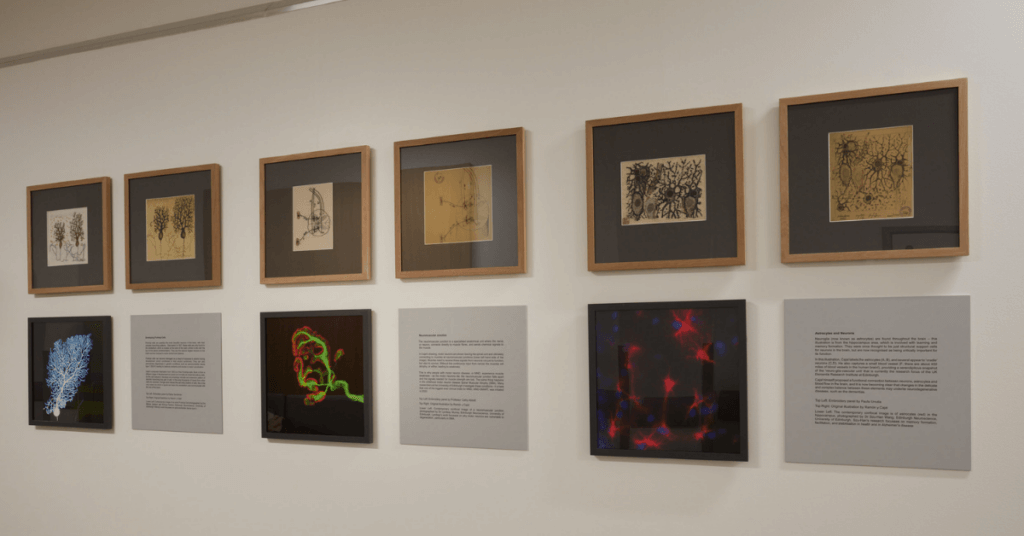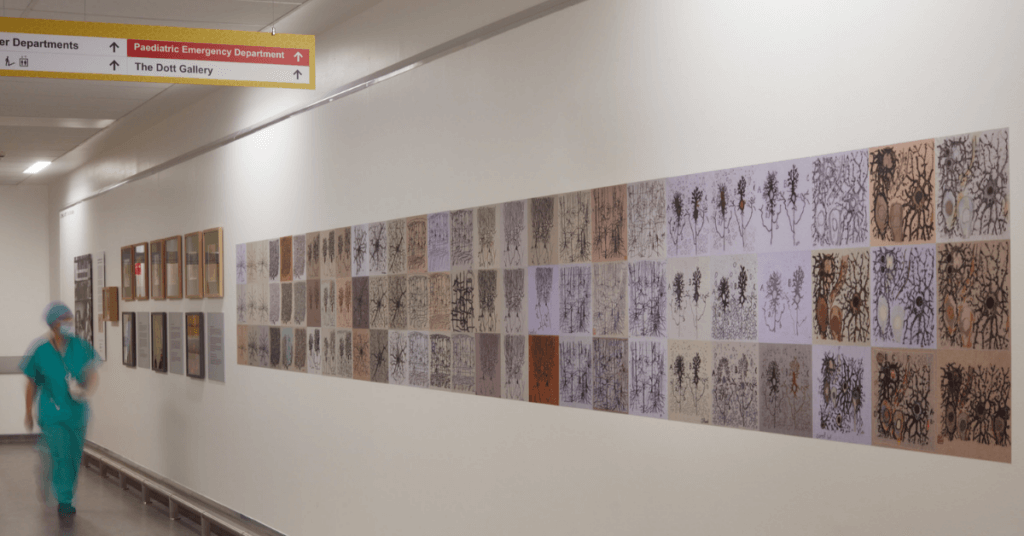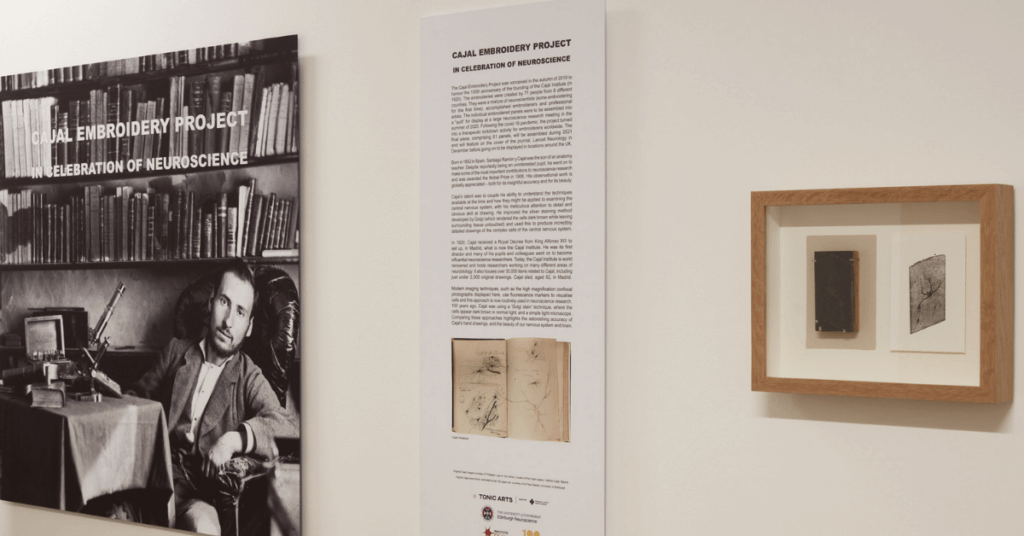Cajal Embroidery Project: In Celebration of Neuroscience
The Cajal Embroidery Project was conceived to honour the 100th anniversary of the founding of the Cajal Institute in 1920. Born in 1852 in Spain, Santiago Ramón y Cajal made some of the most important contributions to neuroscience research and was awarded the Nobel Prize in 1906.
The embroideries, interpretations of Cajal’s drawings, were created by 71 people from 8 different countries. They were a mixture of neuroscientists (some embroidering for the first time), accomplished embroiderers and professional artists. The individual embroidered panels were to be assembled into a “quilt” for display at a large neuroscience research meeting in the summer of 2020. Following the Covid-19 pandemic, the project turned into a therapeutic lockdown activity for embroiderers worldwide. The final piece, comprising 81 panels, will be assembled during 2021 and will feature on the cover of the journal, Lancet Neurology in December before going on to be displayed in locations around the UK.
Cajal’s observational work is globally appreciated – both for its insightful accuracy and for its beauty. His talent was to couple his ability to understand the techniques available at the time and how they might be applied to examining the central nervous system, with his meticulous attention to detail and obvious skill at drawing.
In 1920, Cajal received a Royal Decree from King Alfonso XIII to set up, in Madrid, what is now the Cajal Institute. He was its first director and many of his pupils and colleagues went on to become influential neuroscience researchers. Today, the Cajal Institute is world renowned and hosts researchers working on many different areas of neurobiology. It also houses over 30,000 items related to Cajal, including just under 2,000 original drawings.
Cajal died, aged 82, in Madrid.
Modern imaging techniques, such as the high magnification confocal photographs displayed here, use fluorescence markers to visualise cells and this approach is now routinely used in neuroscience research. 100 years ago Cajal was using a ‘Golgi stain’ technique, where the cells appear dark brown in normal light, and a simple light microscope. Comparing these approaches highlights the astonishing accuracy of Cajal’s hand drawings, and the beauty of our nervous system and brain.
Original Cajal images courtesy of Professor Juan A. De Carlos, Curator of the Cajal Legacy, Instituto Cajal, Madrid.
Image credit: Rebecca Milling




